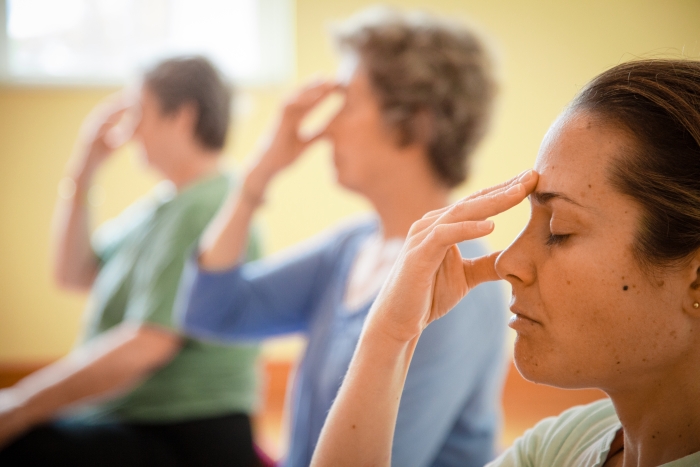
Inhalation (Purak)
The heart rate is slowed; the resting period of the heart (the diastole) is prolonged. So, during the next pumping action of contraction (systole), more blood is pushed into circulation with a better force. Cavities of the heart are better filled with blood.
Retention of the breath (Kumbhak)
No new air is entering the lungs, the oxygen level in the blood is reduced. The brain is sensitive to lowered oxygen tension (poorer quality of the blood), so tries to get more blood (more quantity). The capillaries of the brain and the whole body are opening up. Cerebral anoxia leads to cerebral vasodilation (more capillaries open up and circulation improves).
Exhalation (Rechak)
It is a passive act. Mechanical advantage: with a slow release lungs maintain their elasticity. Major advantage: conscious effort required for slow release needs the cerebral cortex to send inhibitory impulses to the respiratory centre in the mid brain. These inhibitory impulses from the cortex overflow into the adjoining area of the hypothalamus concerned with emotions, and quieten this area. Inhibition of hypothalamus activity.
The first skill we master when practising the technique of Pranayam: Observing without influencing the breath. Automatic respiration is controlled by the respiratory centre, situated in the mid brain. Once we become aware of the process of respiration, its control shifts to the cerebral cortex, causing the cortex to develop, which leads to a higher stage of the evolutionary cycle. Development of cortex.
